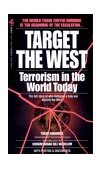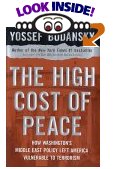|
|
BOOK REVIEW
Two villages and
an elephant
By Chanakya Sen
A Review of
Engaging India: Diplomacy, Democracy
and the Bomb by Strobe Talbott

Metaphors belong naturally to the world of
diplomacy. Allusive manners are considered hallmarks of skillful
diplomats. Strobe Talbott, the prodigious Russian-affairs scholar and
former US deputy secretary of state, has brought alive the crucial
period of diplomatic history after the 1998 Indian and Pakistani nuclear
tests with similes - a non-proliferation elephant that barely crawls to
two different villages as destinations, one aspired by the Americans and
one by the Indians.
In 1998, as the Bill Clinton administration's point man on Russia,
Talbott knew India as "merely important", not "urgent", in US
foreign-policy priorities. However, the May nuclear tests in Pokhran
stunned the State Department. "India was no longer merely important" for
an administration that espoused treaty-based non-proliferation regimes.
Over the next two-and-a-half years, Talbott engaged Indian diplomat
Jaswant Singh in historic dialogue, meeting him 14 times in seven
countries. In this intricate game of negotiating chess, Talbott's
perspective was that the global nuclear order was at stake, while
Jaswant viewed it in terms of India's sovereignty, security and equity.
Talbott's brief was to limit the development and deployment of India's
nuclear arsenal, while Jaswant's was to get the US to accept India as a
nuclear-armed power. In hindsight, Talbott remarks, "Jaswant came closer
to achieving his objective that I did to achieving mine." (p 5)
Bomb in the womb
In 1964, alarmed by the Chinese nuclear tests, India sought security
guarantees from the US, an unrequited idea. When China was allowed to
join the nuclear Non-Proliferation Treaty (NPT) as a nuclear-weapons
state, Indians were infuriated. In 1974, India conducted a "peaceful"
nuclear explosion and kept the option of a nuclear-weapons program open.
At that time, then secretary of state Henry Kissinger assumed that India
would conduct more tests and directed "a basic policy of not pressuring
Indians on their nuclear-weapons program", only to be overruled by the
US Congress (p 17). In 1988, prime minister Rajiv Gandhi warned that if
the NPT nuclear-weapons states did not disarm, India had the right and
need to join their ranks.
In 1990, on receiving intelligence that the Pakistani military had
assembled nuclear weapons and was preparing them for use against India,
the George H W Bush administration dispatched Robert Gates and Richard
Haas on a discreet and successful intervention that would carry
precedent in future crises containing nuclear ramifications.
Hide-and-seek
Bill and Hillary Clinton had a fascination for India and were convinced
about a "new opening" to this neglected Asian giant. Yet the first six
years of Clinton's busy globe-trotting had no place for India. His
administration pursued the objective of keeping the lid on Indian
nuclear and ballistic-missile technology, even as widespread domestic
antipathy to the NPT built up in India. Premier Narasimha Rao visited
Washington in 1994 with the trepidation of being "badgered on
non-proliferation". (p 31) Talbott conveyed to Rao Clinton's hope that
India would resist the powerful temptation to test nuclear devices, but
received no concrete assurances in return.
In December 1995, US satellites photographed suspicious activity at the
Pokhran test site. The US ambassador in Delhi warned Rao of a "full dose
of sanctions" that would hurt the liberalizing economy and forced the
Indians to pull the plug on the test. The test was again suspended in
early 1996 when the two-week-old government crumbled in Delhi.
Standoff
India's May 1998 tests blindsided the US Central Intelligence Agency and
threw Clinton into "a volcanic fit", dimming hopes of bettering
bilateral ties (p 52). Arrays of US sanctions were cranked out against
India, leaving few supporters of prime minister Atal Bihari Vajpayee's
fateful maneuver. Clinton's brain trust's immediate aims were to
persuade India to join the Comprehensive Test Ban Treaty (CTBT) and
dissuade Pakistan from entering the club of NPT spoilers. Clinton
himself floated the thought of a troika with Russia and China to rein in
India and Pakistan to sign the CTBT. The scheme fell through.
Talbott was bluntly informed in Islamabad, "You don't understand the
Indian psyche. The people of Pakistan will not forgive if we do not do
the right thing." (p 61) Prime minister Nawaz Sharif said he could
resist pressure to test if India allowed a plebiscite in Kashmir. As
soon as Pakistan detonated nuclear devices in Chagai, Clinton declared
that there was a threat of "nuclear war" and that South Asia would be
"front and center" in diplomacy during his last two years in office.
Epic dialogue
Vajpayee decided on damage control and sent his adviser Jaswant to sit
and talk "as long as the United States entered without preconditions".
(p 76) At the envoy's first meeting with Talbott in June 1998 in
Washington, Jaswant justified India's decision to go nuclear for
defending itself against its enemies. China being "the principal
variable in the calculus of Indian foreign and defense policy", Jaswant
deplored US tendencies of "hyphenating us with Pakistan". (p 85) Talbott
replied that Indian and Pakistani fates were interlocked since they had
just conducted back-to-back nuclear tests. Jaswant dangled out feelers
that India "might" sign the CTBT in exchange for the lifting of the US
sanctions.
The second session of the dialogue took place in Frankfurt in July,
where Jaswant repeated that "maybe something could be worked out on
non-proliferation" if sanctions were lifted. The third meeting was in
Delhi in the same month. Talbott presented five benchmarks for carrying
the non-proliferation elephant to its ideal village. They included
India's signing of the CTBT within a year and adopting "strategic
restraint" in missile building. Jaswant demurred that these benchmarks
were based on "American judgments about Indian defense requirements" and
that the CTBT signature would "take time". The Indian side was unsure
how much of a nuclear arsenal was enough. When Talbott had an audience
with Vajpayee, "on the subject of CTBT, his silence was absolute". (p
100)
Jaswant foxily gave oracular utterances to the press creating the
impression that he was getting along famously with Talbott, fanning
suspicions and anxiety in Pakistan. Talbott found Pakistani diplomacy
"reactive and ineffectual in part because Pakistani democracy was so
fragile". (p 107) Sharif kept linking the CTBT to Kashmir, a strategy
that went nowhere with the Americans.
Talbott next met with Jaswant in August in Washington. The Indians
played the card of Republican senators in the US hell bent on thwarting
the CTBT and claimed that it made their government's signature on the
CTBT harder. In light of the recent East African bombings, Jaswant's
ploy was to lie back and wait for the administration's preoccupation
with Islamic terrorism to replace its upset over the Indian nuclear
program. His ultimate goal was to get sanctions lifted without India
meeting any of the "elephant benchmarks".
At the next meeting in New York in September, Jaswant slipped in
references that he would meet with Jesse Helms, the Senate Foreign
Relations Committee chairman who detested the CTBT. Pro-India and
farm-belt members of US Congress were putting pressure on the Clinton
administration - exactly as the Indians hoped. Jaswant and Talbott sat
down next in November in Rome. The Americans explained that the US did
not automatically side with Pakistan in the zero-sum game of the
subcontinent.
At the next summit in Delhi in January 1999, Jaswant (now foreign
minister in Vajpayee's cabinet) exploited the Clinton administration's
slipping grip for applying weight on India. The US Congress, France,
Italy, Germany and the United Kingdom were all inclined to lower the bar
for sanctions relief. The Indians offered minuscule movement on two
benchmarks and asked for a large reward. Their partial steps were
"couched in future conditional tense and riddled with escape clauses".
(p 146) Relenting to the soft stonewalling and needing to display an
appearance of progress, the US released a big World Bank loan to India.
Brokering peace
The May meeting in Moscow convinced Talbott that India would not sign
the CTBT that spring because of political paralysis. Meanwhile,
Pakistani military infiltrators into Indian Kashmir brought about a
full-fledged border conflict that appeared to have portents of nuclear
cataclysm (Talbott had information that Pakistan might be preparing its
nuclear forces for deployment). The US put the blame squarely on
Pakistan for instigating the crisis and demanded its withdrawal from
Kargil as a precondition for a settlement and for US intervention.
Clinton chided Sharif point-blank at a Blair House emergency
appointment, "I'm not - and the Indians are not - going to let you get
away with blackmail." He threatened making public a statement detailing
Pakistan's role in supporting terrorism in Afghanistan and Kashmir.
Pakistan withdrew from Kargil soon after.
The elephant's swansong
For the first time, the US had allayed Indian doubts about "whether we
would take their security interests properly into account". (p 163)
Kargil made Vajpayee more trusting of Clinton, but more wary on nuclear
matters. India released its draft nuclear doctrine that enunciated a
"strategic triad" based on the more-bombs-are-better philosophy of
deterrence. In October 1999, the US Senate rejected the CTBT, a severe
setback to the administration's efforts with India and Pakistan. Clinton
had to waive significant sanctions against India.
The next formal dialogue round happened in London in November. Indian
interlocutors wanted an end to all sanctions as well as rights and
privileges available to NPT signatories in exchange for signing the CTBT.
Talbott declined. Jaswant, embattled by domestic allegations that India
was caving in to US bullying to curtail its defenses, could give little
at the next meeting in January 2000 in London.
Eyeing reality, Clinton dropped all preconditions for his long-postponed
India trip. In contrast to stripped-down visits to Pakistan and
Bangladesh (partly for security concerns), Clinton's visit to India was
transformational for US-India relations. Vajpayee pressed for full
acceptance of India as a nuclear-weapons state and president K R
Narayanan chastised the guest for commenting that South Asia was "the
most dangerous place on Earth". Clinton did not hide differences on
nuclear issues and hinted that the US could advance India's quest for
permanent membership of the United Nations Security Council if it
advanced non-proliferation. But the emerging possibility of the anti-CTBT
Republican candidate, George W Bush, winning the next elections gave the
Indian government space to wait for even better terms.
Jaswant and Talbott met for the last time in Bangkok in July 2000. "Our
work was done and we both knew it." (p 206) Jaswant officially notified
that India would not sign the CTBT.
A new tenor
The George W Bush presidency maintained NPT-related restrictions on
India for two-and-a-half years, especially due to Secretary of State
Colin Powell's desire for continuity of policy. The cushion of trust
created in Clinton's time helped the Bush administration send another
troubleshooting mission to South Asia after the terrorist attack on
India's parliament in December 2001. Richard Armitage, Talbott's
successor, elicited an assurance from Pakistani President General Pervez
Musharraf that cross-border infiltration would stop. Even Clinton
prodded behind the scenes in 2003 when tensions heightened over
terrorist incidents in India.
Talbott concludes that the Indian bomb remains "very much at issue" (p
224), though Bush's re-election in effect shelves it. The talk now,
under Condoleezza Rice when she takes over the State Department and
Stephen Hadley as national security adviser-designate, is of "ending the
nuclear dispute" with India and boosting military-strategic cooperation.
Talbott's empathy for Jaswant's India outshines his policy
disagreements. Engaging India arrives as a fascinating primary
source about the ever-tightening "strategic partnership" between the
United States and India. It takes readers through the pivotal moments
when US-India relations stepped on to greener pastures after 50 years of
fallowness.
Engaging India.
Diplomacy, Democracy and the Bomb by Strobe Talbott. Penguin Books
India, New Delhi, 2004. ISBN: 0-67-005771-1 Price US$8.75, 268 pages.
|


